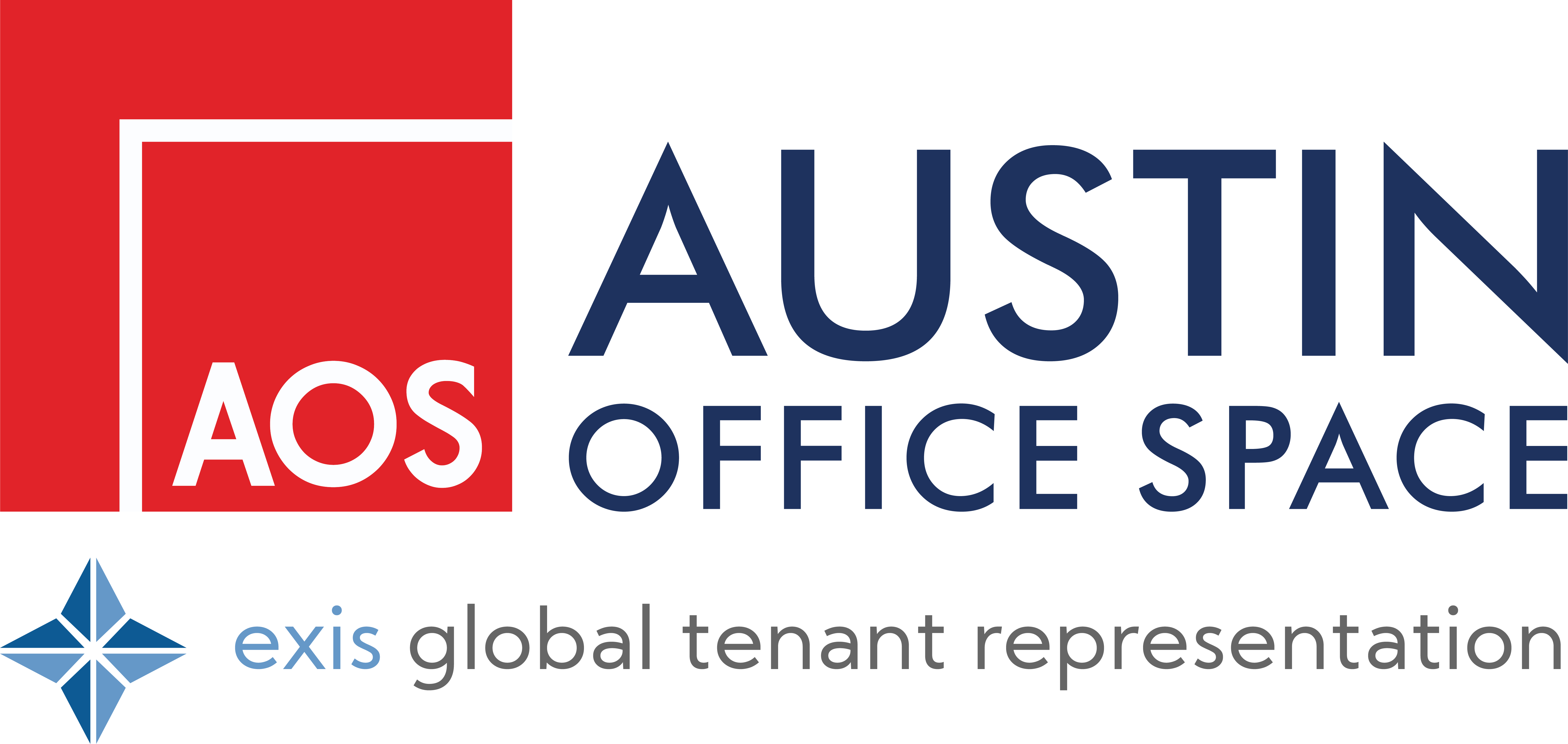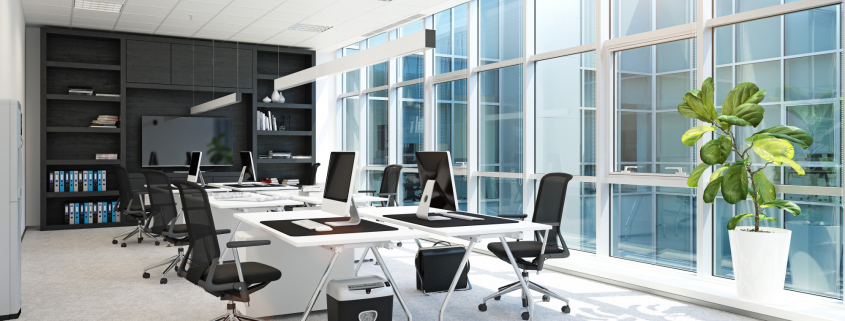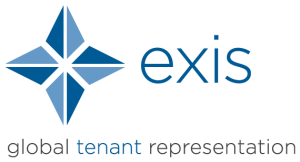How to Find an Office Space for Rent That’s Perfect for Your Company
Most people will spend about 90,000 hours or 1/3 of their lives at work. If you’re a small business owner, manager, or entrepreneur, add 33% to that already whopping total.
With those numbers in mind, it goes without saying (but we’re going to say it anyway) that choosing the right office space is a big deal. Don’t you wish there was a button you could push or a link you could click that would immediately show you the perfect one?
Unfortunately, if you’ve been considering a move or are looking to open the doors to your first real office space, then you’ve probably figured out that it’s not exactly the easiest wish to grant.
How will you find the place that will essentially be your home-away-from-home?
Don’t worry, we’ve got you covered.
With hard-working, people like you in mind, we’ve put together this guide to finding an office space for rent that will meet your needs now and in the years to come.
The Self Survey
Before you start your search, it’s a good idea to answer these 4 questions so you’ll have a solid idea of what to look for in an office space for rent.
1. What’s my budget?
You knew this was coming. This is the most important question and it needs a definitive answer. Sort of. What we mean is that you should be defining a range of rent amounts that your business would be comfortable paying.
It should be noted that the price in most listings for office space for rent is for base rent, which is only for the space. The listed price doesn’t include additional fees or taxes.
So be realistic and remember to include some cushion in your monthly rent range that accounts for an estimate of CAM fees (common area maintenance fees) and tax, as well as additional charges for amenities like parking. Many office buildings also include electric and janitorial services with your lease and ALL of the fees together are called NNN expenses or “triple net”.
There are likely to be a few one-time fees involved with moving into a new space such as the issuance of security keys or cards for each of your team members.
2. How much office space do I need?
You don’t have to know the exact square footage, you just need to consider how many separate parts of an office would be necessary for your ideal and most effective workflow.
When we say “separate parts of an office,” think about:
- How many individual offices are needed? How many people need separate offices with their own doors?
- Do you need a reception area that’s separate from the rest of the office? This is sometimes a preference and sometimes a requirement. If you love everything about an office space but it doesn’t have a reception area and you need one, it might be possible to make it happen.
- Do you need a break room or lounge? If you have or would like to offer your staff something extra, say a yoga or meditation space, a juice bar, a gym- anything, you want your future space to have room for that.
- How about a bathroom? Most buildings will have common area restrooms, which are restrooms that are shared with other building occupants (usually by floor), but if you’re looking for an exclusive one, be sure to keep that in mind because it’s not always a simple matter to add a restroom to an existing space.
- Does your business have special needs? No, this isn’t a trick question, we know that all businesses have special needs, but in this case, you want to think about things like servers and copiers. Do you have a massive collection of servers that need a temperature-controlled climate? Maybe your business includes 3D printing and your 3D printer needs its own space? Or maybe you have files that have a minimum or secured storage requirement?
- Future expansion? If you expect to add to your team in the next 2-5 years, you don’t want to have to move again, so leave some cushion in your square footage for additional team members.
3. Where is my ideal office located?
Location, location, what about location? We don’t just mean “Austin, TX” or “Dirty 6th Street.” Although we can certainly see the appeal for both of those. Yes, you should know which city, but also think about the kind of neighborhood that your business would thrive best in and around.
The downtown metro area? More suburban? Industrial? Is there something that you need to be close to for maximum business model effectiveness?
A big part of the answer to this question should take your target demographic into consideration. Where are your customers? Where would they think it would be most convenient for you to be located.
For example, many businesses opt to be in what’s known as the “CBD” or “Central Business District” of a city even though it’s mostly a Monday through Friday business potential because they see the advantage of being right where their customers are for most of their waking hours during the week.
Keep in mind (for your budget’s sake) that you’re very likely to pay a premium for a hot spot CBD location, no matter which city you choose. But it might be worth it, so be sure to consider that option.
4. What kinds of amenities am I looking for?
In real estate terms, “amenities” refers to any property feature that isn’t considered essential, but adds comfort, convenience, or enjoyment. It’s a good idea to make two lists for this question. One list will be for things that you can’t do without and the other will be a “wish” list.
If you need some inspiration for this question, we’ve put together the following lists of “common” and “uncommon, but popular” amenities offered in the world of commercial office space for rent:
Common
- High-speed wifi
- Fitness facilities
- Showers
- Secured access, such as key card or code
- Conference or meeting rooms
- Covered parking
- Reserved parking
- Concierge or Lobby Reception
- Lounge areas
- Bike racks
- Additional storage space
- EV parking spaces
- Green spaces
- Dining options on property
Uncommon But Popular
- Pool
- Rooftop lounge areas
- Exclusive restaurant for tenants and their guests
- Child daycare services
Keep in mind that A (amenities) = MMM (more money monthly). This equation is the reason we suggested that you have two lists for this question.
Ask yourself if an amenity is “Must Have” or “Wish For.” You’ll thank yourself for that later.
These lists are by no means exhaustive, but they’re a good start.
Putting it all together
Don’t shoulder this consideration process all on your own, get together with your leadership team and get some feedback from them. Ask them if they have any ideas or suggestions for what they’d appreciate in the next version of a workplace. What kinds of amenities have they always envied others for?
In addition to the different perspectives and information you’re likely to get from these brainstorming sessions, you’ll score with your team for including them in the discussion. Whether or not their suggestions make the final cut, they’ll feel like they’ve been heard and have contributed. That goes a long way, too.
Construction, Contractors, and Keeping it Together
Let’s talk about building out space.
What’s a “Build-Out”?
For anyone unfamiliar with the term, a “build-out” is the process of retrofitting an existing space to meet the needs of an incoming tenant.
Build-outs are often referred to by real estate professionals as “TIs” or “tenant improvements.” TIs are the same as build-outs, the name change is really just due to perspective. Tenants see it as building out their space and real estate professionals see it as a tenant making improvements to the space.
Build-outs come in all shapes and sizes and vary greatly across the different types of real estate (office, retail, warehouse, etc.).
If you’re looking for ideas about what kind of layout might work best for your team, we can help. We’ve put together some information about the 3 most common office layouts.
In the world of office space for rent, build-outs will usually follow one of these types of layouts:
1. Open Concept
This is where walls might get blown out (but not really “blown” so much as carefully taken down) to create a layout that’s about 70% open with cubicles or free-standing desks or tables and seating areas, 20% private offices and conference rooms, with the last 10% being restrooms and breakroom (or karaoke rooms) or any other shared facilities.
The open setting of Open Concept layouts results in communication usually being more informal and casual, which can be great. But, it also means there’s less privacy and more distractions.
Construction costs for this type of build-out are typically the lowest of the three, but as with anything, it depends on what the existing space offers and what the incoming tenant wants.
2. Traditional Private Office
Basically the opposite of Open Concept, this is the kind of layout that most of us envision when we think of the word “office.” The distribution is the same for shared facilities (10%), but reversed for the other two types of spaces, so 70% private offices and 20% cubicles or desks, including the reception or front desk area.
This concept is about privacy. It makes for an outwardly more formal mode of communication and supports quiet, focused work. If your business deals with a lot of sensitive materials or information, this is likely the route to go. It’s not a favorite of some of the newer start-ups because of its intended privacy, but that is up to each business.
Construction costs will vary greatly for this type of layout and largely depends on what you start with. Remember that this is the typical layout of office space for rent up until about 5-10 years ago, so if your new building was built prior to that, it will likely be in this layout, so costs would be less. If you choose a more recently constructed building, it might require putting up a few more walls, which means more money.
3. Collaborative
Our final type of layout is a mix of the first two and is a favorite amongst the startups. For this type of layout, there is no “standard” formula for how the space is distributed.
Instead, the distribution is based on function or task. It includes small and large meeting areas, team “zones,” community areas, as well as a few private offices sprinkled in. The mix of private and open spaces seems to work well and supports the business models of many start-ups which encourages strong company culture.
Construction costs for this type of layout can be pricy, depending on the complexity of the configuration and how much of the existing space can be used.
Your broker can help
It’s always a good idea to talk with a professional. Potential build-outs are no exception. Whether or not you’re sure about the kind of build-out or not, speaking with an experienced broker who can give you more specific information and help you get estimates for different options is definitely to your benefit. They’ll have a much better idea of whether a space would work well for what you want or not.
In addition, they’ll be familiar with all the processes involved for getting preliminary bids prior to signing a lease and help estimate the timing for permitting and occupancy.
The Low-Down on Listings
Now that you know what you need, you’re ready to start identifying potential spaces that would work for those needs. Right?
We don’t want to rain on your parade but the truth is that real estate listings are sort of written in code. We’re sure you’ve heard about the residential listings that read “cute mid-century bungalow with free parking” which actually means “really tiny studio space with street parking.”
The commercial listings can be just as misleading and even more vague than their residential equivalents. Enlisting the services of a real estate professional is an excellent choice at any point, but especially at this point.
What are the benefits of hiring a real estate professional?
The right real estate professional or agent can make a big difference in many ways. Here’s why:
- They know your target area and are very likely to be familiar with any vacancies in the market
- They work for you and have your best interests as their priority
- They can decipher the code in listings
- They know the ropes because they have done this many more times than you hopefully will ever have to
And don’t forget that they don’t get paid unless and until you find the right fit for you and your team.
Going on Tour
You’ve found a few places that you’re excited about and your real estate agent has set you up to take a look at potential new office space for rent. It’s easy to get caught up in the potential of a space and forget to ask key questions or see a potential problem. We’ve got your back.
The following is a list of features and functions that you should be aware of. They may not all apply to your specific situation, but most of them should.
On Property or Outside the Space
(These are features of the property to check on)
- Ease of access (including ingress/egress, how many access points, and their positioning)
- Parking
- Condition of property (paint, paving, sidewalks, elevator, stairwell, parking lot, anything that stands out to you, good or bad, make a note)
- Traffic and Noise
- Common area conditions (incl. trash and restrooms, if shared)
- Security?
Inside the Space
(These are features of the space to check on)
- Air conditioning/HVAC system. If the space is fitted with A/C and it’s not already on, turn it on as soon as you open the space so you can see if it gets cold, if it makes a lot of noise or smells, or if there are any obvious problems.
- General condition (clean/not clean, does it smell, any noticeable damage)
- Configuration – easy to work with or lots of work to make it work for you?
- Lighting and electrical check: electrical box (if possible), lights, outlets, and anything else hooked into these systems
- Plumbing/water fixtures check water pressure for sinks, drains, toilets (TIP: flush a piece of toilet paper so you can see if there’s an issue)
- Storage area/s
- Ceiling: Damage? Water spots?
- Wiring: Check for existing cable, telephone, internet lines
- Noise
These lists of questions are just to start you off and point you in a productive direction. Discuss them with your real estate agent before and after the tour and make any adjustments that you see fit.
The Office Space For Rent is in Sight
You’ve found The One. The office space for rent one, that is. The next step is where your real estate agent will take the lead. It’s time to make a deal.
The Proposal
This is also referred to as the “LOI” (Letter of Intent) or just “the offer.” The first offer is usually given by the prospective tenant. You’ll sit down and discuss the terms that you, your contractor, and your real estate agent are comfortable with.
The terms included in each LOI are intended to be deal-specific but a few things that are standard include:
- Official name that will be on the lease
- Rent amount (per square foot or a total monthly amount)
- Term dates
- Square footage
- Common Area Maintenance fees and what is included
- Parking allotments and price, if any
- Commercial insurance requirements
- Brokerage commission fees (this outlines who pays)
- Build-out information (your agent can provide this)
- Security Deposit
Proposals will be exchanged between you and the landlord (or their agent) until an agreement is reached.
Tenant Incentives
Also referred to as “Lease Incentives,” Tenant Incentives are concessions sometimes offered by landlords to encourage a new tenant to enter into a lease or to sweet talk an existing tenant into renewing their lease. They’re not guaranteed to be available but if offered, should become part of the lease agreement.
Tenant Incentives can be anything from free rent to a commitment to contribute a certain amount to a tenant’s planned improvements. Your real estate agent will advise you as to whether your offer should include a Tenant Incentive and what kind.
It’s a Sign!
Well, it’s TO sign. Once the terms have been agreed upon by both parties, the lease will be drafted and it’s time to sign on that dotted line!
Congratulations, You Did It!
You have your brand office space for rent in the place you had hoped for, with the configuration that will work best for you and your team, and you got a great deal on terms. That is quite an accomplishment and definitely something to be proud of! Now it’s time to make it happen!
Let Us Help!
If you’re interested in leasing office space in or around the Austin, Texas area, we’d love the opportunity to fill the role of the real estate agent in your story.
Our team has exclusively represented tenants in Austin for over 20 years. We have the experience, the knowledge, and the resources to become a resource and an asset to you and your team.
Click here to connect with us so that together, we can make this story a reality!





